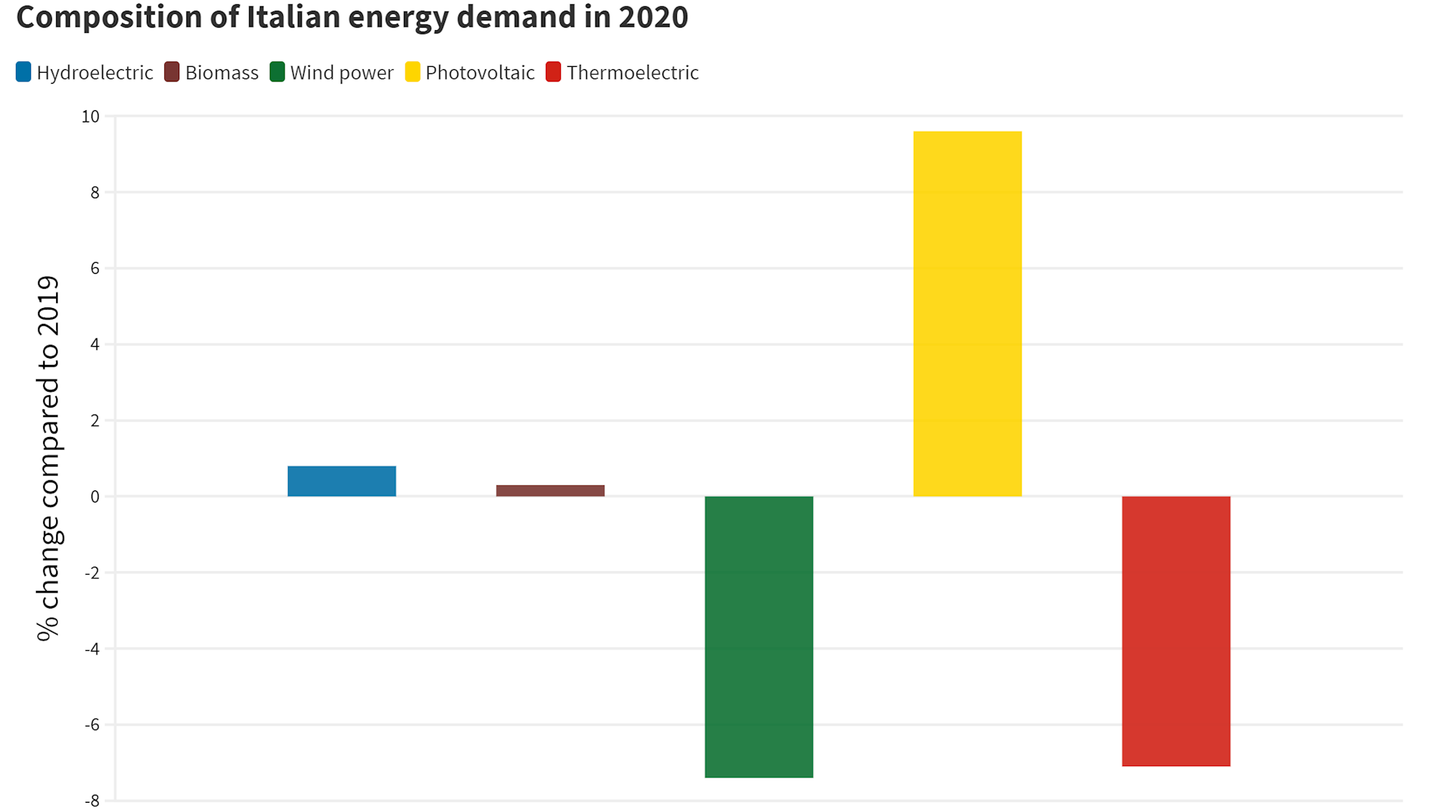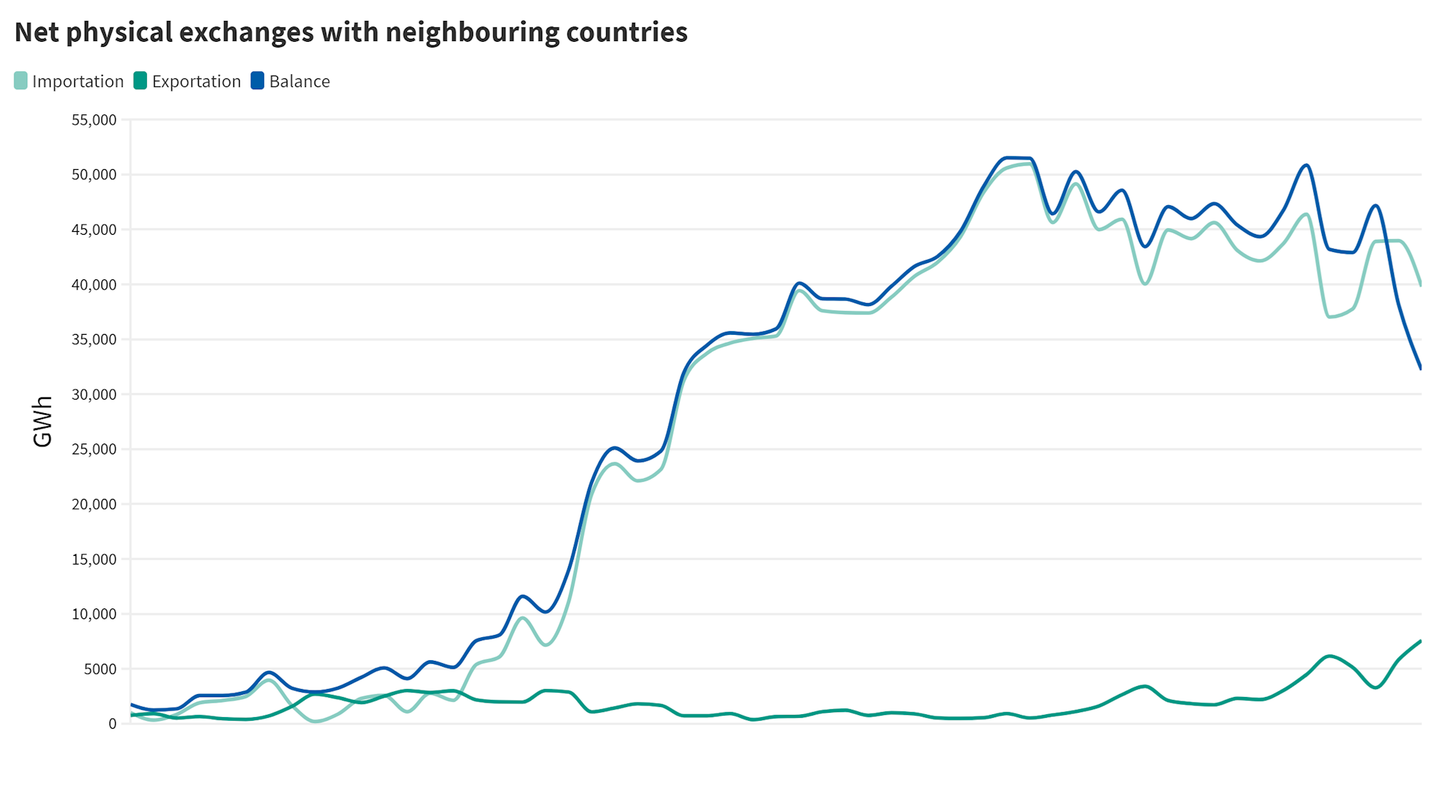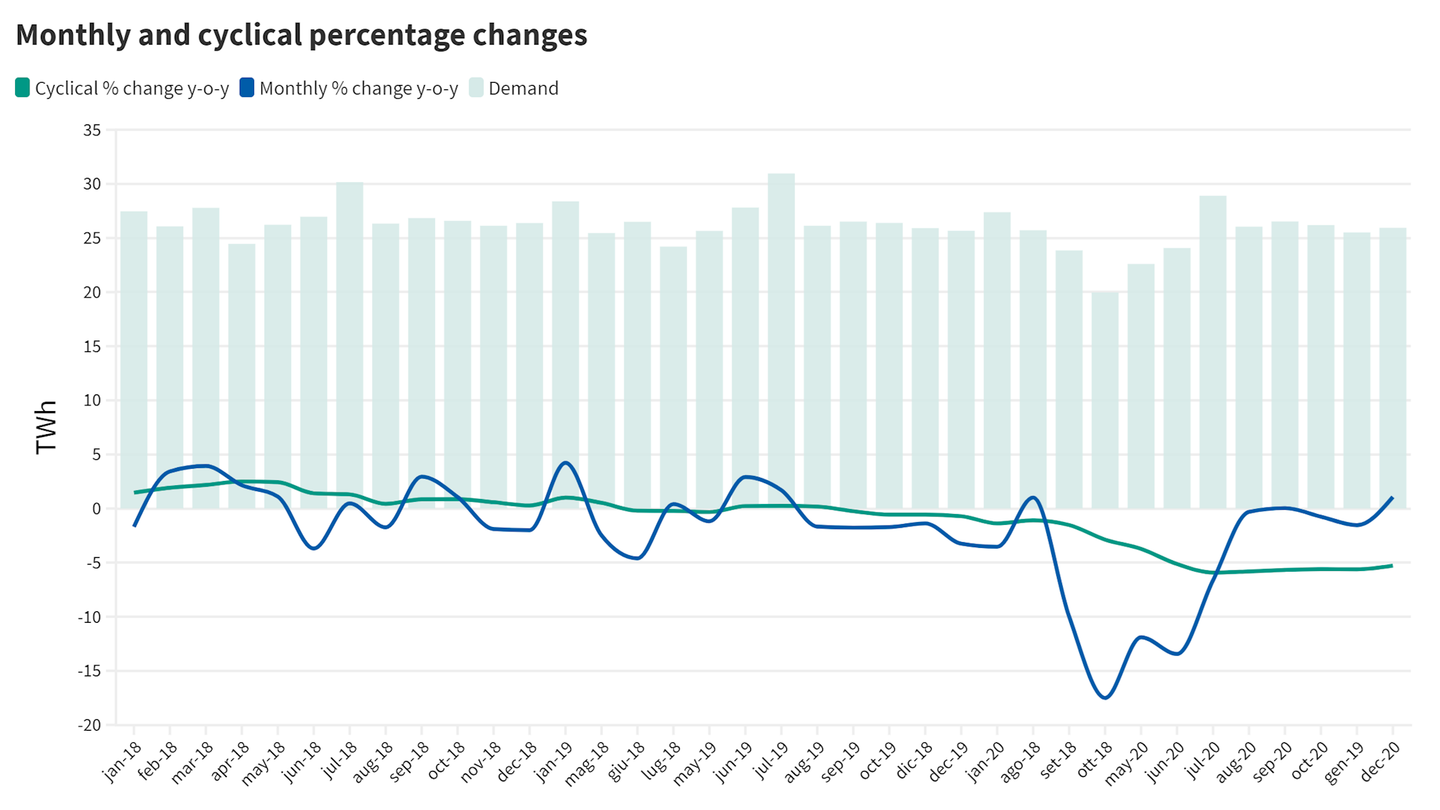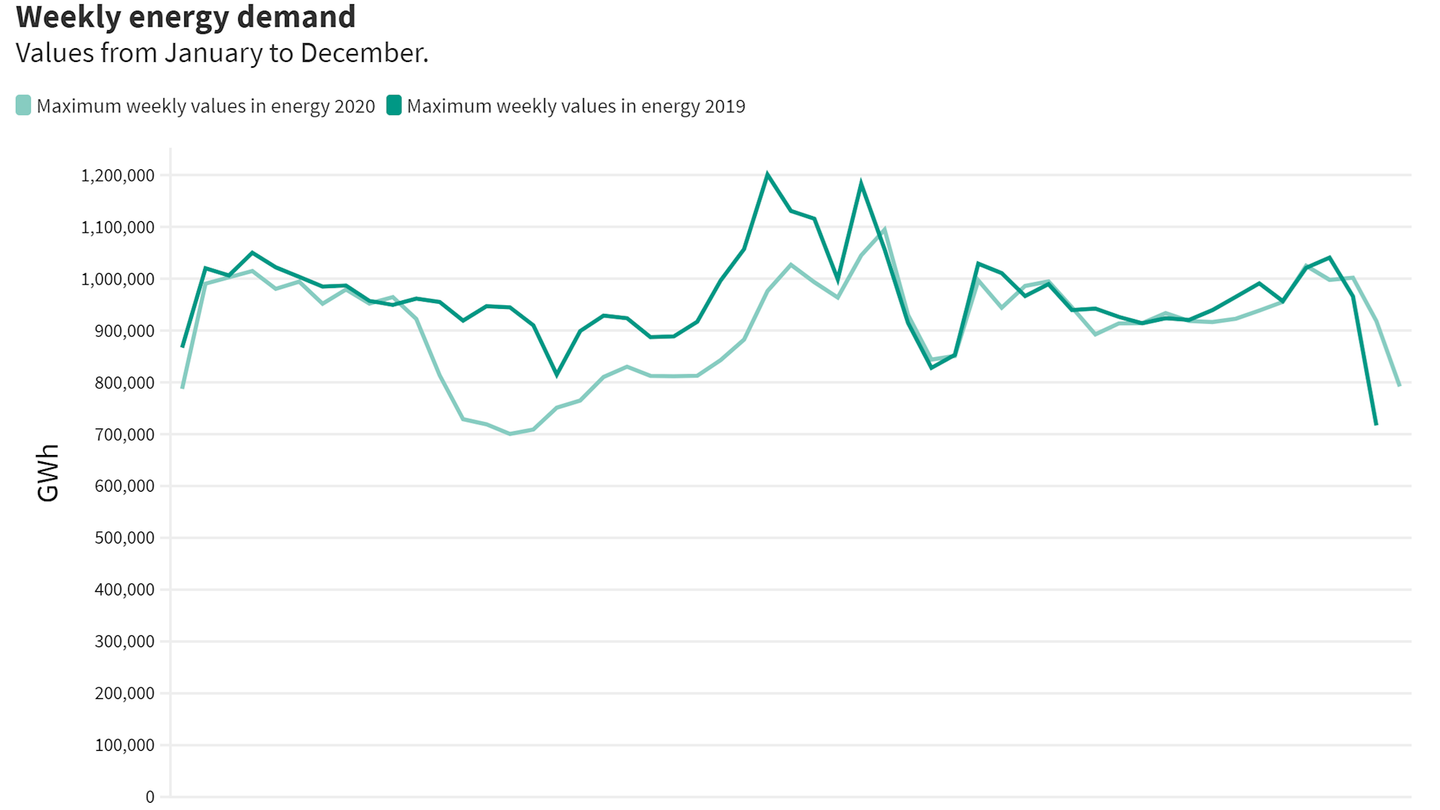2020 will go down in history as the year of the Covid-19 pandemic and how it profoundly changed our lifestyles. On the energy front, the epidemic deeply affected the entire planet, with many countries imposing restrictions on travel and economic activities, thus altering normal patterns of energy consumption and people's energy needs. The Terna annual report on the provisional operating data of the national electricity system clearly illustrates the impact of Italian government restrictions, comparing the differences in dispatching figures with 2019 data. These are provisional data, but they provide information that helps us understand the past year.
In 2020, Italian energy demand totalled 302,751 GWh, a 5.3% reduction compared to the 2019 total demand of 16,871 GWh. Unlike 2019, there was a slight increase in the share of electricity produced by renewable sources, with photovoltaics increasing by 9.6%, although other major sources such as wind power recorded decreases (-7.4%). Energy production from non-renewable sources decreased accordingly.



